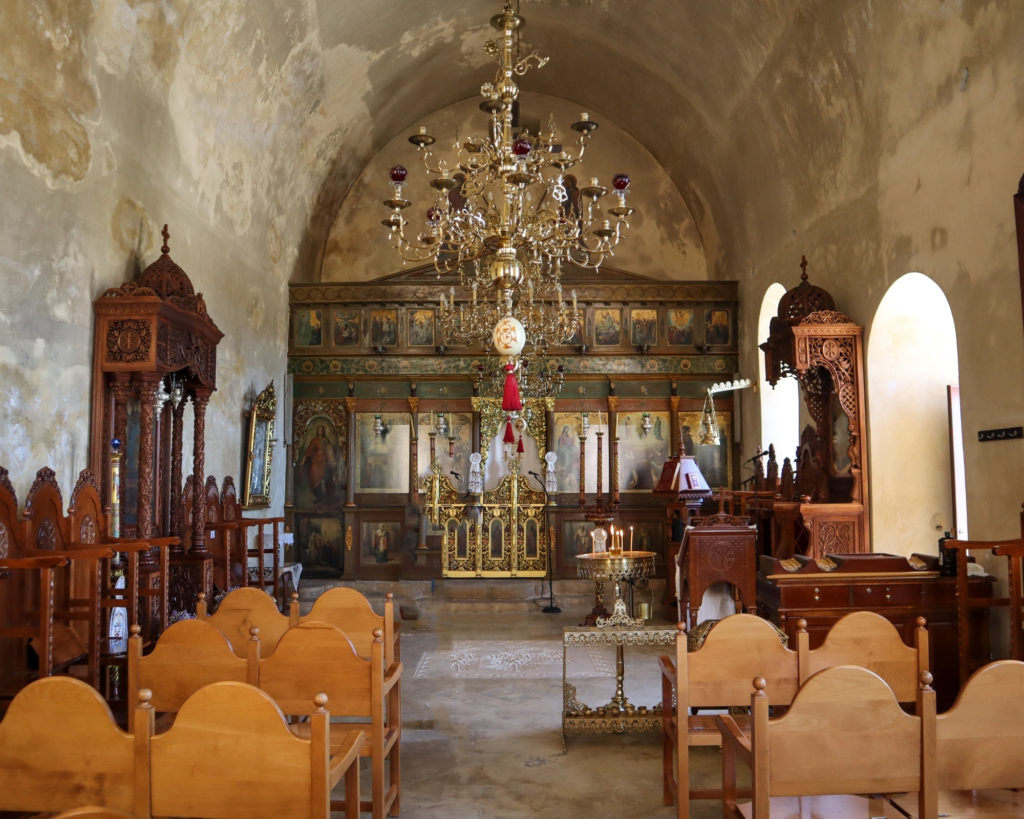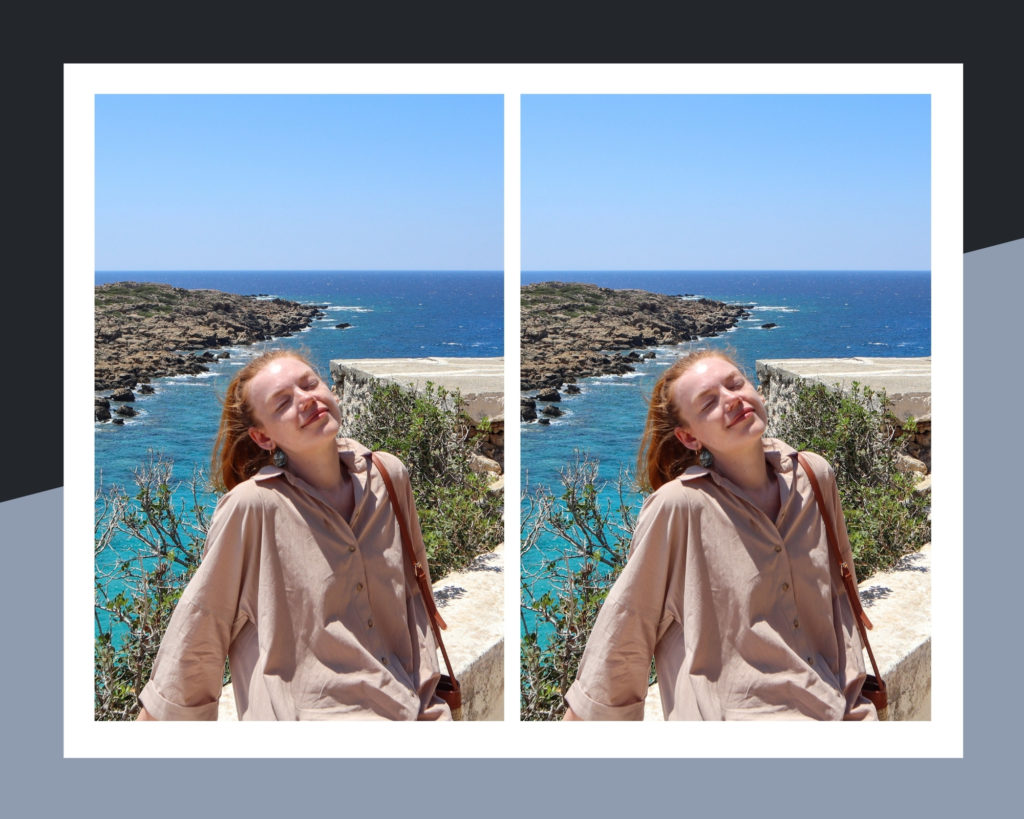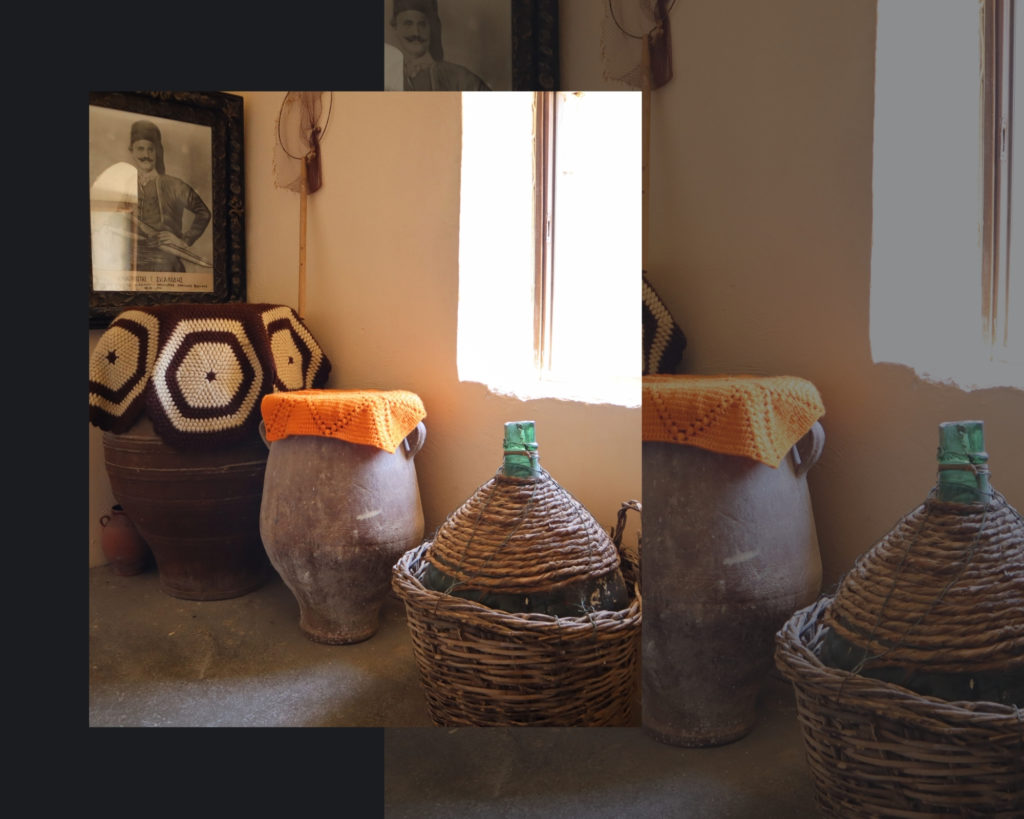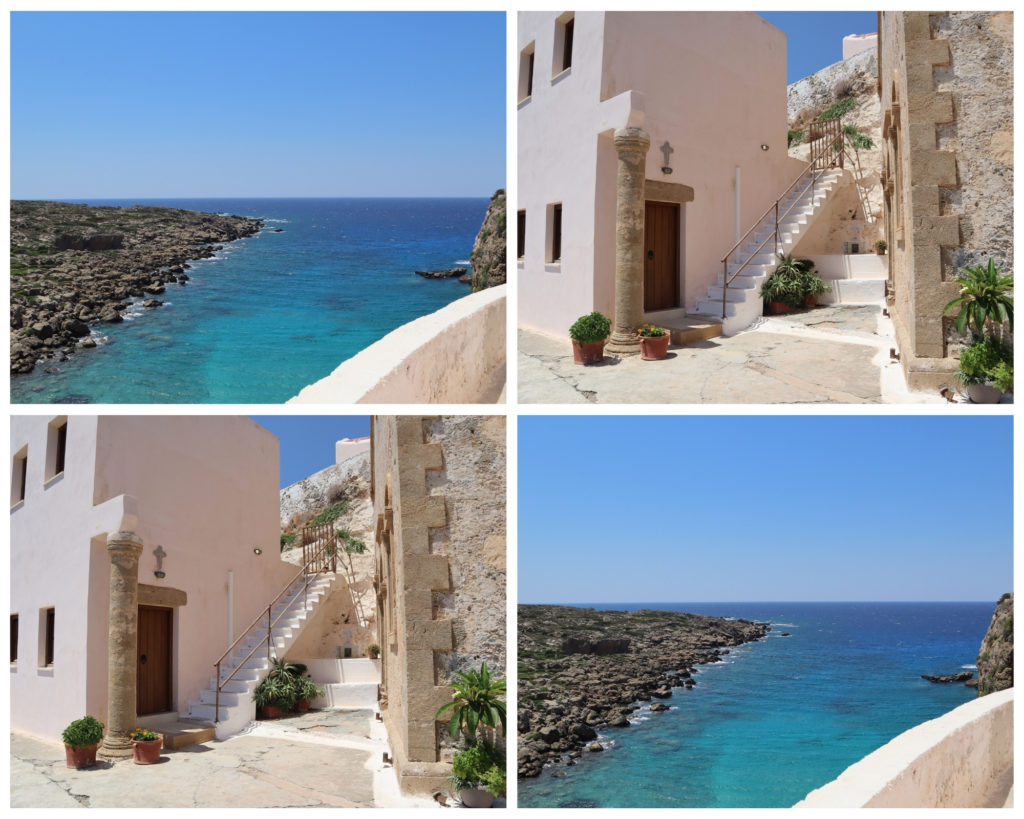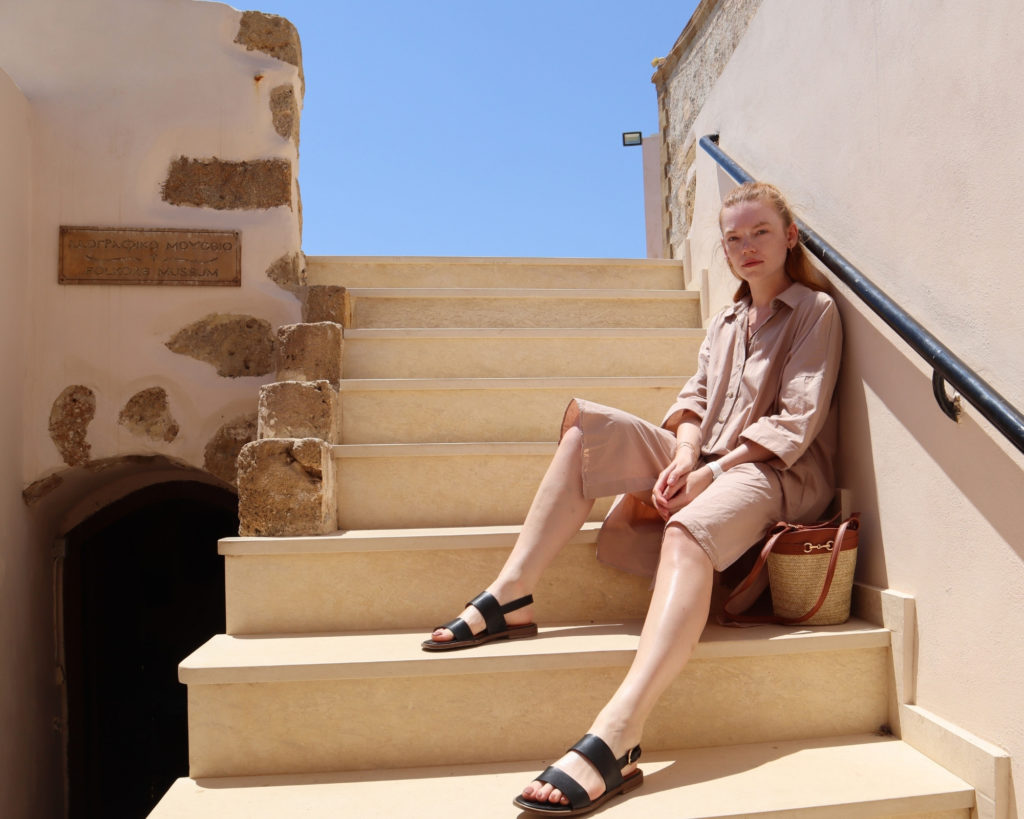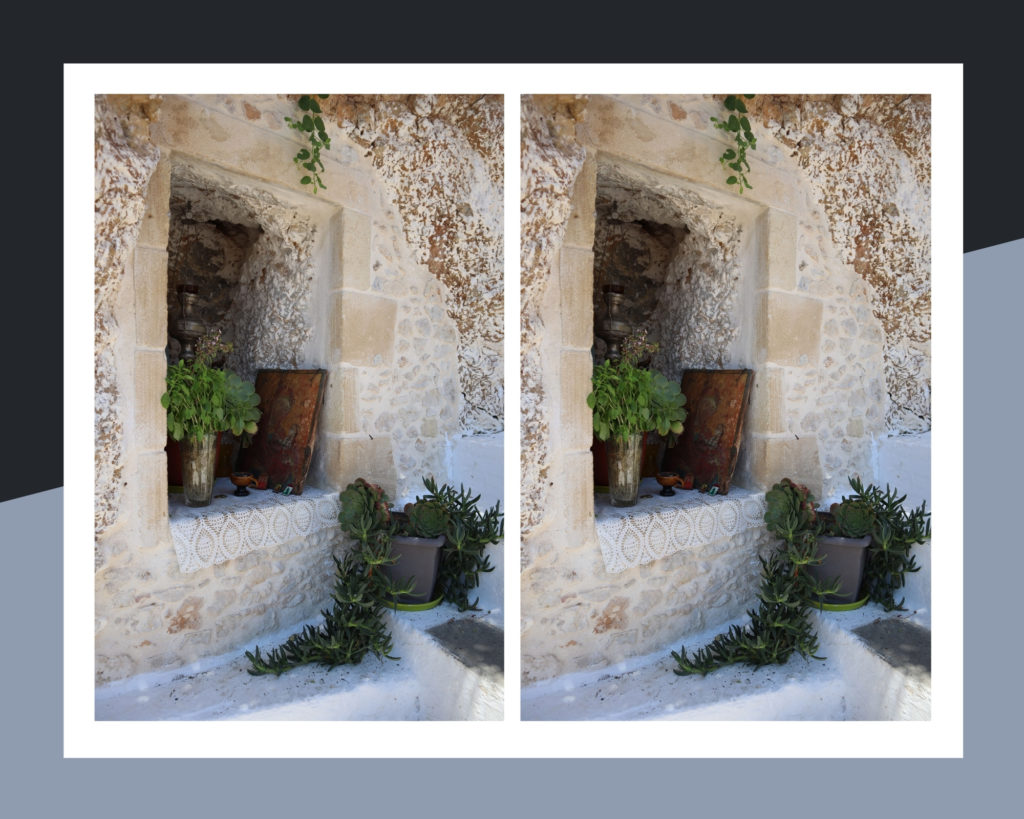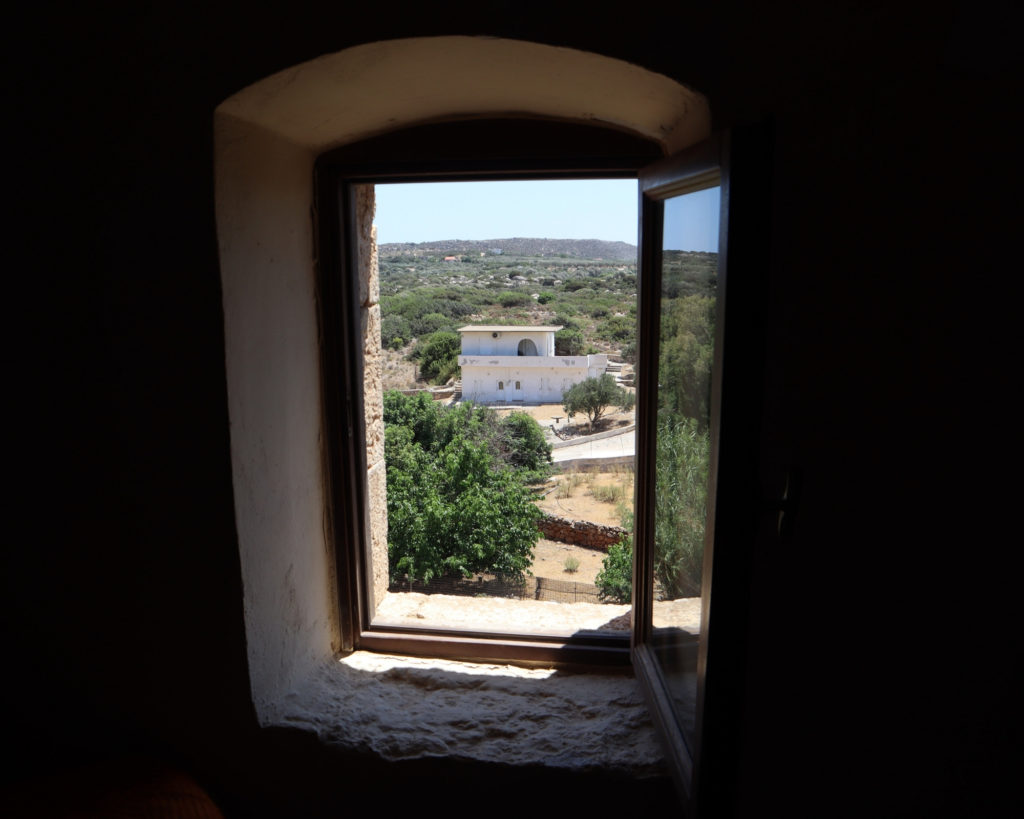If you are heading towards Elafonissi Beach, then it’s definitely worth stopping by the Chrisoskalitissa Monastery. This beautiful place is very well maintained, and for a symbolic entrance price, you can admire Katholiko of the Holy Monastery, Folklore Museum, Byzantine Museum, Chapels, and breathtaking views from the Monastery over the Meditteranean Sea. Scroll down to learn a bit about the history of this peaceful asylum!
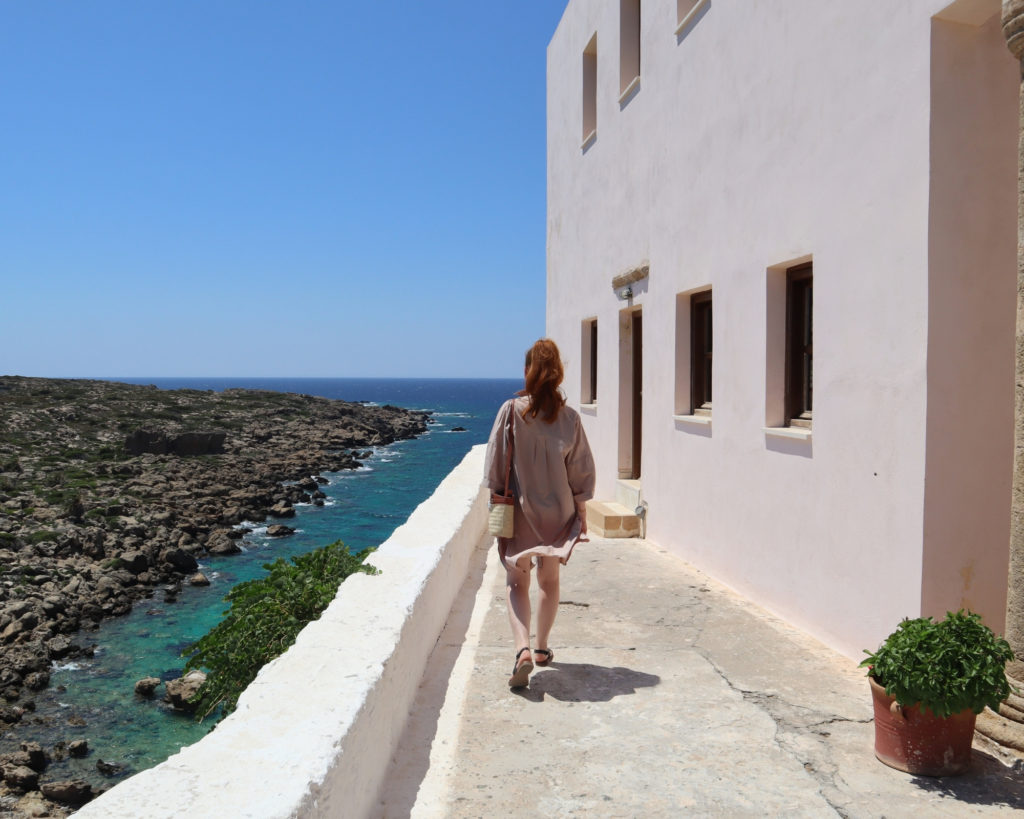
In the western side of Crete passing through the chestnut trees of Kissamos, the visitor arrives at the western coast of the island of Crete. Here on a sheer rock the monastery of Chryssoskalitissa is sited. It is concecrated to the Assumption of Virgin Mother (15 Nickolaos. According to the August). During the Venetian occupation and possibly until the beginning of the Turkish occupation, the monastery was dedicated to Saint tradition, the holiness of the place is due to the presence of the icon of the Assumption of Virgin Mother which was found in a hollow of a rock. It was found by a farmer who saw as a vision the light of an oil-lamp in the evenings. The icon was carried to the slopes of the rock where itwas more a pp roachable for a ch ur ch to be built. But the icon was removed to where it had been found for the first time. It became obvious that Virgin Mother wanted the church to be built on the rock and so it was done.
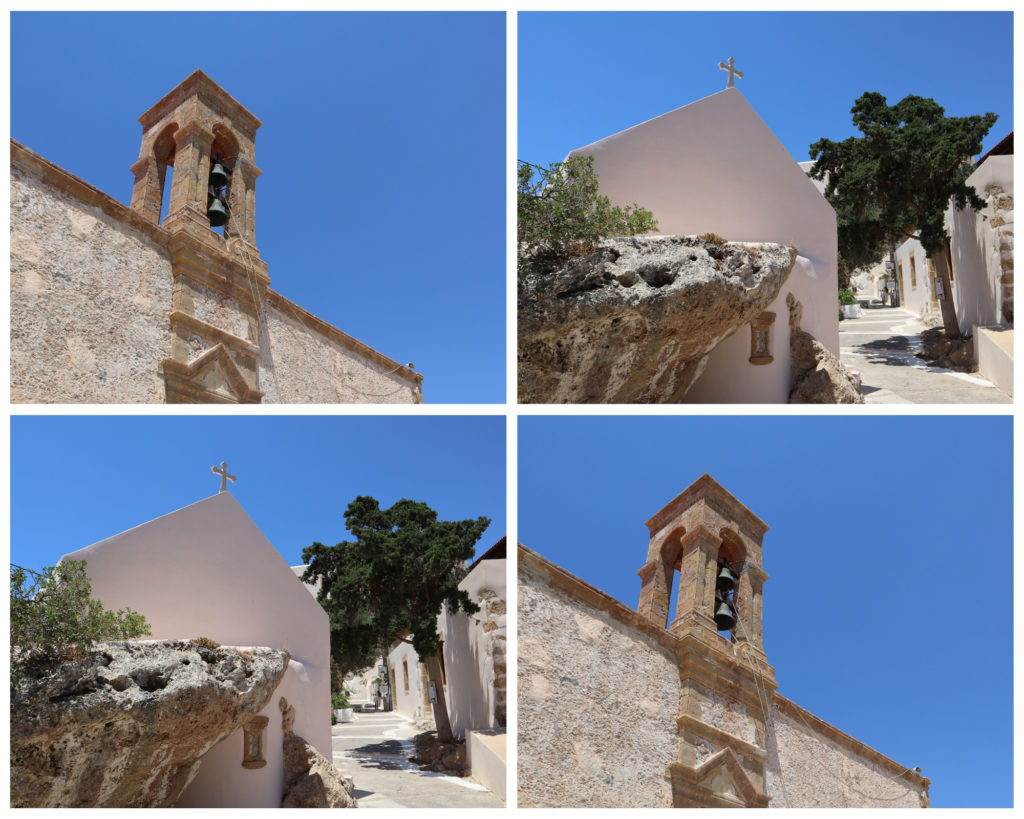
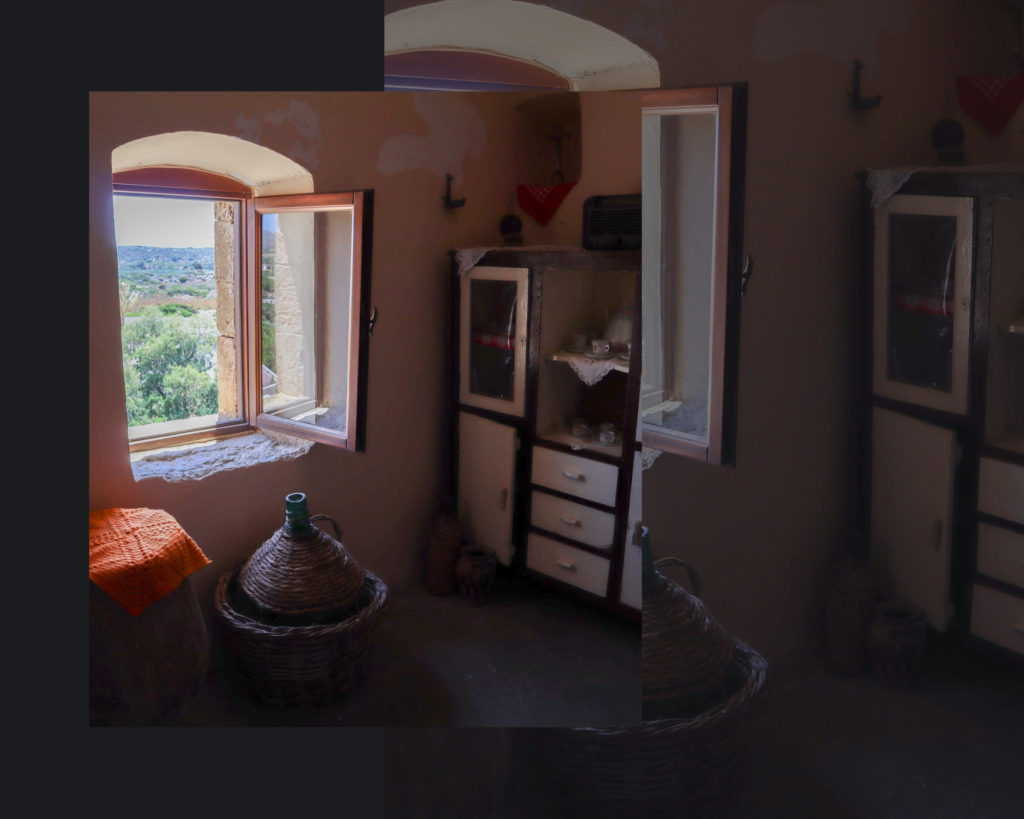
As tradition says, the name Chryssoskalitissa (carved on gold) was taken from a golden stair, the last of ninety eight stairs which led to the holy rock. \kis said this stair was sold among other property of the monastery to the Turks for the payment of taxes imposed by the sultan. It is also mentioned that on Easter day 1824 and after the massacre of the Christians by Ibrahim Pasha of Egypt in Elafonissos, a few soldiers from the Turkish army passed by the empty at that time monastery of Chryssoskalitissa intending to destroy it. However, when they were walking up the stairs they were attacked by a swarm of bees nested in a cavity of the rock and the monastery was saved. Today at the place there is an iconostasion to remind the miracle by Virgin Mother.
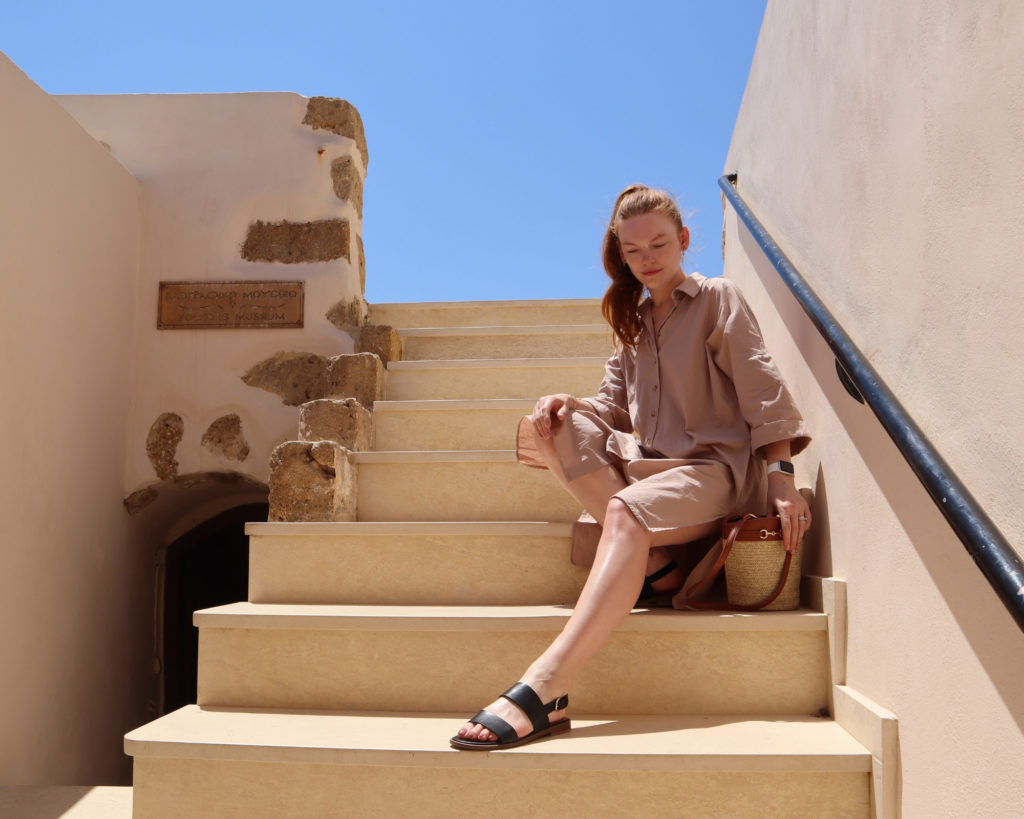
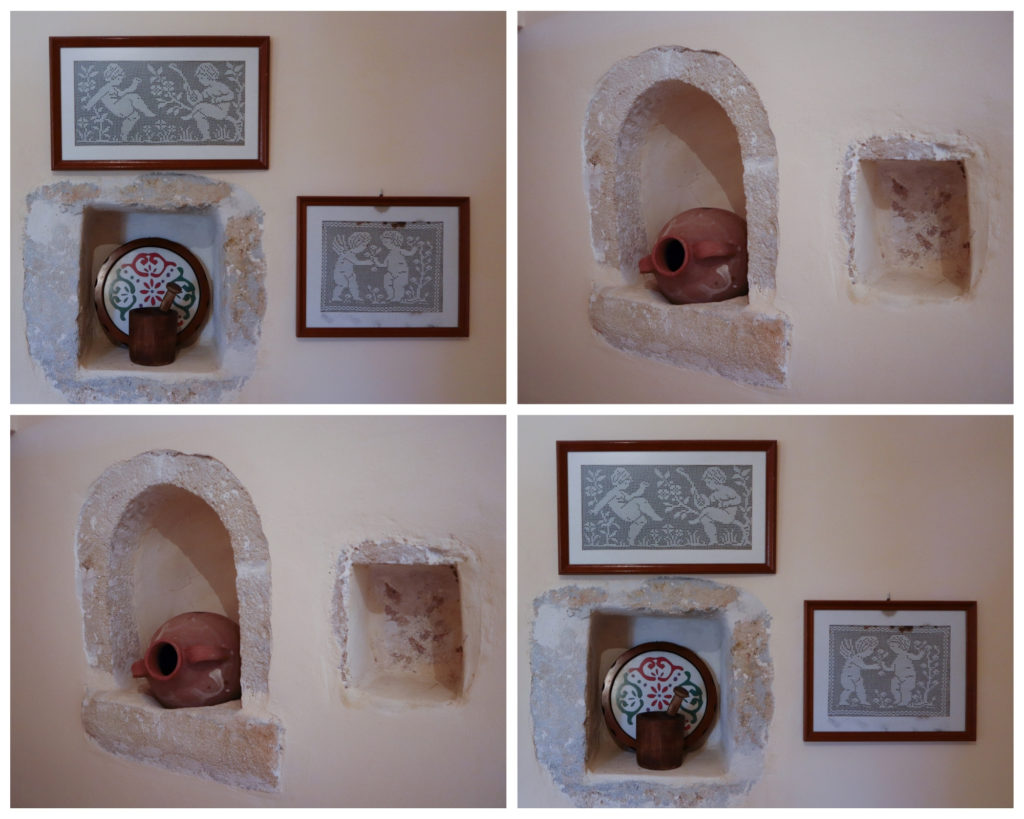
In 1855 the reconstruction and restoration of the monastery started by the monk Manassis Karagiannakis who worked very hard for this purpose. He was succeeded by Emmanuel Kalitsounakis, his clerical name Meletios, who built a wall on the rock as well as cells for the monks. Meletios was in turn succeeded by Michael Katerinakis (Manassis) who, with the help of George Plokamakis (Gregory), pulled the small old church down, cut a small part of the rock and built a bigger church, the one we see today. The construction of the church began on 9 May 1894 and was completed on 10 August of the same year. It was inaugurated by the then Bishop of Kissamos, Dorotheos Klonaris on the day of its celebration, that is,15 August 1894. In 1900 the monastery as well as other monasteries of Crete were disorganized. It was re-established in 1940. During the German occupation it had been a shelter for a lot of soldiers. Life came back in the monastery after January 1944 and it is continued up to this day by the hospitable and tireless monks, who serve and keep alive this shrine of ourfaith and country.
